Addicted to rehab
I want to thank people for their very encouraging comments and suggestions following my last post. They have really inspired me. So…I’m going to keep the blog going for a while, and I’m going to enjoy it.
Now here’s that guest post I promised you–
…by Michael A…
After going through 28 rehabs within 3 years, I now carry 3½ years of sobriety. During my recovery attempts, I fell into an unforeseeable yet common addiction. I became addicted to rehab itself, sometimes called the “Treatment Shuffle.”
My addiction started as many commonly do – partying at a young age and going too far until I needed drugs every day to feel ok with all my insecurities. By the age of 21, I was crying for help, addicted to cocaine and opioids. Thanks to my mother and her insurance, we were confident we could find affordable treatment. Researching treatment revealed an overwhelming number of drug rehab centers, most of which looked like 5-star resorts. This appeared like a nice way to step away from my broken lifestyle. Neither I nor my mom knew how to appropriately vet treatment, and I chose the one that appealed to me aesthetically. My mom was just happy I was going somewhere safe, away from drugs.
 I was astonished by the luxury when I arrived, but still nervous about this life change. I was approached by a client who befriended me, giving me an education on the “how to screw the system” plan that most of the clients followed. I learned about abusing detox meds, how to act like the perfect client, and who to get real (illegal) drugs from, all within the first week.
I was astonished by the luxury when I arrived, but still nervous about this life change. I was approached by a client who befriended me, giving me an education on the “how to screw the system” plan that most of the clients followed. I learned about abusing detox meds, how to act like the perfect client, and who to get real (illegal) drugs from, all within the first week.
After the detox and stabilization phase, I was sent to a less structured environment to transition back to normal life. This concept should work. However, this center,  like many others, placed me in a low-income area surrounded by drug activity. Imagine 50 people from all over the country who just want to get high in a house where drugs are right over the fence. Most clients hopped the fence every day, got high, and hooked up with girls (it was a coed rehab). It was chaos. Being insecure, I fell right in. We’d get caught, sent back to detox, loaded up on suboxone and benzos (detox meds we’d get high on) and start treatment all over. The insurance billing cycle restarts and we would too. These types of centers benefit if you relapse because they can bill your insurance at a higher level of care.
like many others, placed me in a low-income area surrounded by drug activity. Imagine 50 people from all over the country who just want to get high in a house where drugs are right over the fence. Most clients hopped the fence every day, got high, and hooked up with girls (it was a coed rehab). It was chaos. Being insecure, I fell right in. We’d get caught, sent back to detox, loaded up on suboxone and benzos (detox meds we’d get high on) and start treatment all over. The insurance billing cycle restarts and we would too. These types of centers benefit if you relapse because they can bill your insurance at a higher level of care.
I didn’t learn much at this 30-day treatment center. No healing took place, and all I wanted was to keep numbing my emotions with drugs. When I finished, I went to a  sober living house, attempted AA, but continued to relapse. I still needed some real therapy. As time continued, I met more experienced users, got into new drugs, and learned more about how to use rehabs and detoxes to support my addiction.
sober living house, attempted AA, but continued to relapse. I still needed some real therapy. As time continued, I met more experienced users, got into new drugs, and learned more about how to use rehabs and detoxes to support my addiction.
I played out the same pattern for about 3 years. I’d get high until I ran out of money, then go to detox for a free (insurance  covered) high on opioid-benzo detox cocktails. When I really needed a reset, I would check into luxury treatment centers to get food, sleep and “work the system.” My insurance was great, and I found sober living homes that welcomed me to live there for free and get high, as long as I attended their outpatient rehab program. Treatment centers got paid for every relapse, and my addiction got worse. I knew I needed something more. I had to get away from this lifestyle of rehab hopping. There had to be something different.
covered) high on opioid-benzo detox cocktails. When I really needed a reset, I would check into luxury treatment centers to get food, sleep and “work the system.” My insurance was great, and I found sober living homes that welcomed me to live there for free and get high, as long as I attended their outpatient rehab program. Treatment centers got paid for every relapse, and my addiction got worse. I knew I needed something more. I had to get away from this lifestyle of rehab hopping. There had to be something different.
By talking to people who had sustained sobriety and success in life, I heard about different approaches to recovery: Centers that were long term (3-5 months), challenging physically and mentally, and forced you to confront your traumas and  negative thinking patterns. Places that used alternative approaches to therapy, such as SMART recovery, Rational Emotive Behavior Therapy, fitness therapy, and other critical thinking techniques to heal an addicted brain. For an analytical, physically broken person like me, this sounded like what I needed. I was guided to a place called Tree House Recovery in California, which offered this alternative approach.
negative thinking patterns. Places that used alternative approaches to therapy, such as SMART recovery, Rational Emotive Behavior Therapy, fitness therapy, and other critical thinking techniques to heal an addicted brain. For an analytical, physically broken person like me, this sounded like what I needed. I was guided to a place called Tree House Recovery in California, which offered this alternative approach.
When I got to Tree House, I began a routine of daily fitness therapy, team based training in the ocean that forced the pre-frontal cortex (logic & connection) to be engaged, intense motivational interviewing and therapy, and an addiction education that was more in depth than any other center had offered. It was impossible for me not to heal here. My brain got rewired, I felt empowered, and  began to love life sober. I would highly recommend exploring Tree House Recovery to get an idea of evidence-based treatment that works. This was the one that worked best for me, but I would suggest doing the appropriate research for each individual circumstance.
began to love life sober. I would highly recommend exploring Tree House Recovery to get an idea of evidence-based treatment that works. This was the one that worked best for me, but I would suggest doing the appropriate research for each individual circumstance.
If you know someone struggling with addiction, whether it’s their first time looking for treatment or the 28th time, look through the options. DO NOT let someone pick the easiest route. Do not rush into the first one that will take someone. Spend the time necessary time to make this the only/last treatment needed. Ask the centers you’re looking at for their success rates, and ask how they define success. Is it graduation rates, or graduates that have remained sober for at least a year after treatment? Ask how they obtain this data and how often. Ask what methods are used for treating the biological, psychological, and societal aspects of addiction: how often and why? Most importantly, read a lot of testimonials from graduates and parents.
Rehabs do work if you go to the right one and follow a successful routine to maintain a healthy lifestyle. I got sober to succeed in life. I learned how to use my drive (once used on drug seeking) to find happiness, to achieve excellence and follow my passions. Having an addictive disposition can be seen as an advantage in life when that “go go go” mentality is used for good. I love life today, and am fortunate I survived the “Treatment Shuffle.” 6 ½ years later, I can say success is possible.
 Picture yourself in a large, dark circular chamber, sleeping bags and cushions arranged all around the perimeter of the room, with an interesting looking (often long-haired, colourfully dressed) man or woman seated on each of them. About 25 in all. There’s a fire crackling in the middle of the room, its smoke rising to a chimney hole in the shadows high above. The shaman sits on a stool behind a little table, covered by fabrics and totems of various sorts, somewhere behind the fire. There are candles here and
Picture yourself in a large, dark circular chamber, sleeping bags and cushions arranged all around the perimeter of the room, with an interesting looking (often long-haired, colourfully dressed) man or woman seated on each of them. About 25 in all. There’s a fire crackling in the middle of the room, its smoke rising to a chimney hole in the shadows high above. The shaman sits on a stool behind a little table, covered by fabrics and totems of various sorts, somewhere behind the fire. There are candles here and  there, but the chamber is mostly dark. An assistant, sitting next to the shaman, prepares the brew, stirring a large flask of brown liquid. The shaman pours a certain amount in a cup, then beckons the next person to come and drink.
there, but the chamber is mostly dark. An assistant, sitting next to the shaman, prepares the brew, stirring a large flask of brown liquid. The shaman pours a certain amount in a cup, then beckons the next person to come and drink.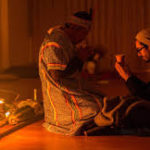 but I sense his smile, the twinkle in his eye as he looks directly at me. He hands me an earthenware mug, and I drink the nasty tasting liquid in two gulps. I thank him by touching his hand. Then I sit back down, and the next person takes my place.
but I sense his smile, the twinkle in his eye as he looks directly at me. He hands me an earthenware mug, and I drink the nasty tasting liquid in two gulps. I thank him by touching his hand. Then I sit back down, and the next person takes my place.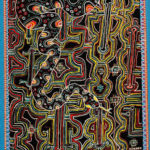 are painted on fabric and which are insinuating themselves in the air all around me. Tiny noises are magnified; sounds ricochet through an echo chamber.
are painted on fabric and which are insinuating themselves in the air all around me. Tiny noises are magnified; sounds ricochet through an echo chamber. And I kept asking myself, and asking the plant who seemed a living presence, who could endure this? And the answer came when I listened to my breathing and asked (as I often still do in meditation) who is doing this breathing? This body. That’s who.
And I kept asking myself, and asking the plant who seemed a living presence, who could endure this? And the answer came when I listened to my breathing and asked (as I often still do in meditation) who is doing this breathing? This body. That’s who. heard my voice coil into these self-effacing, euphemistic pleas: if it wouldn’t be too much trouble…if you wouldn’t mind… In fact I could not imagine that someone (like a parent) might just want to help me. I could not trust.
heard my voice coil into these self-effacing, euphemistic pleas: if it wouldn’t be too much trouble…if you wouldn’t mind… In fact I could not imagine that someone (like a parent) might just want to help me. I could not trust.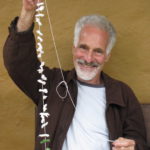 My four subsequent ayahuasca trips (three in South America) weren’t nearly as difficult as that first one. And I was able to make it to the toilet each time — though sometimes at a run. Why did I ever take it again? Because I wanted to experience other facets of this strange substance and the tradition it came from. And I did. I experienced cohesion, love for those around me, beauty so intense that it made me cry, and something else I’d never felt before: pure, unfettered gratitude, gushing outward into the universe. Gratitude for something I can’t explain. I mention this because I don’t want to
My four subsequent ayahuasca trips (three in South America) weren’t nearly as difficult as that first one. And I was able to make it to the toilet each time — though sometimes at a run. Why did I ever take it again? Because I wanted to experience other facets of this strange substance and the tradition it came from. And I did. I experienced cohesion, love for those around me, beauty so intense that it made me cry, and something else I’d never felt before: pure, unfettered gratitude, gushing outward into the universe. Gratitude for something I can’t explain. I mention this because I don’t want to  leave you with the impression that psychedelics can only be valuable for the pain they release. They can also be valuable for connecting us with the goodness inside and outside ourselves.
leave you with the impression that psychedelics can only be valuable for the pain they release. They can also be valuable for connecting us with the goodness inside and outside ourselves.




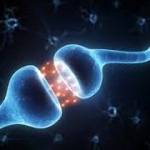

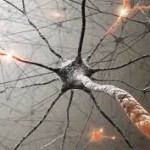
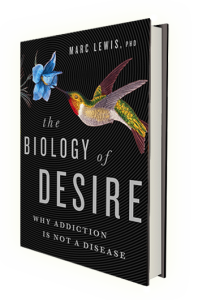 Informed by unparalleled neuroscientific insight and written with his usual flare, Marc Lewis’s The Biology of Desire effectively refutes the medical view of addiction as a brain disease. A bracing and informative corrective to the muddle that now characterizes public and professional discourse on this topic.” —Gabor Maté, M.D., author of In The Realm of Hungry Ghosts: Close Encounters With Addiction
Informed by unparalleled neuroscientific insight and written with his usual flare, Marc Lewis’s The Biology of Desire effectively refutes the medical view of addiction as a brain disease. A bracing and informative corrective to the muddle that now characterizes public and professional discourse on this topic.” —Gabor Maté, M.D., author of In The Realm of Hungry Ghosts: Close Encounters With Addiction
Recent Comments